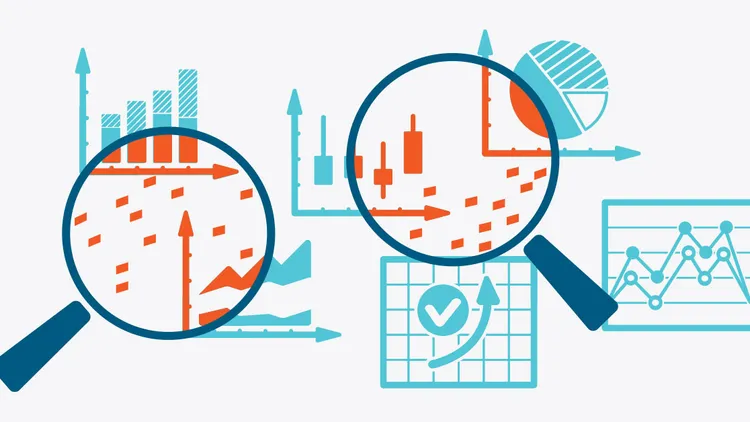
Cleaning and Preparing Data for ML Projetcs
Data cleaning and data preparation are crucial steps in the machine learning pipeline. The quality and structure of your data directly impact the performance, accuracy, and reliability of machine learning models. Without properly cleaned and prepared data, even the most advanced algorithms can produce misleading or inaccurate results.
Data cleaning focuses on removing errors, inconsistencies, and handling missing information, ensuring that the dataset is accurate and consistent. This step is vital because machine learning models are highly sensitive to the quality of the data they are trained on—unclean data can lead to biased models, poor predictions, and overfitting.
Once the data is clean, data preparation takes it further by transforming the dataset into a format optimized for the machine learning algorithms. This includes feature engineering, scaling, encoding categorical variables, and splitting the data into training and test sets. These steps are essential to ensure that models can learn effectively from the data, improve their generalization to unseen examples, and avoid common pitfalls like imbalanced data or feature dominance.
Data cleaning
Cleaning the data is an essential part of preparing your dataset for analysis or machine learning models. It involves identifying and handling inconsistencies, errors, and missing information to improve data quality. Here are the key steps involved in cleaning the data:
1. Handling Missing Data
Missing values are common in datasets, and there are different strategies to deal with them:
- Remove rows or columns: If a feature (column) or observation (row) has too many missing values, you can choose to remove it entirely.
- Imputation: Replace missing values with a sensible value, such as:
- Mean, median, or mode of the column.
- Using predictive models to estimate the missing values.
- Forward/backward fill (propagating values forward or backward).
Example: If a column representing income has missing values, you could fill them with the median income.
2. Dealing with Outliers
Outliers can distort analysis and model performance. Ways to handle them include:
- Remove outliers: If they are errors or not relevant.
- Transform the data: Use techniques like logarithmic scaling to reduce the impact of outliers.
- Cap outliers: Set a threshold and cap values beyond this limit.
Example: In a sales dataset, extreme sales values that are outside three standard deviations from the mean might be capped or removed.
3. Handling Duplicates
Duplicate records can distort analysis by overweighting certain observations. Remove duplicates, especially if they result from data entry errors or merging datasets incorrectly.
Example: If a customer record appears multiple times with the same data, you would remove the duplicates.
4. Correcting Inconsistent Data
Inconsistent data can result from human error, different formats, or sources. This includes:
- Standardizing text values: Make sure similar data entries have consistent values (e.g., “NY” and “New York” should be unified).
- Correcting misformatted dates or other data types: Ensuring date formats are consistent across entries.
Example: Unifying “male” and “M” in a gender column to a consistent value.
5. Correcting Data Types
Ensure that the data types for each feature are appropriate for analysis or machine learning:
- Convert numeric data stored as text (e.g., ‘1000’ instead of 1000) into numbers.
- Ensure date-time fields are correctly formatted as date objects.
Example: Convert a date string like 01/01/2020 to a datetime object for easier manipulation.
6. Standardizing or Normalizing Data
Some machine learning algorithms (e.g., those based on distance metrics like k-NN or SVM) perform better when data is standardized or normalized:
- Standardization: Scale data so that it has a mean of 0 and a standard deviation of 1.
- Normalization: Scale data to fit within a certain range (e.g., 0 to 1).
Example: Standardize age or income data so that all features are on a similar scale.
By thoroughly cleaning your data, you ensure that it is of high quality and free from errors that could lead to misleading results or poor model performance.
Data Preparation
Data preparation is a crucial step in getting your dataset ready for analysis or machine learning models. It involves transforming, engineering, and refining the data to optimize model performance and ensure meaningful insights. Here are the key steps involved in data preparation:
1. Data Cleaning
Remember that before diving into further preparation, you need to ensure that your data is clean. This involves:
- Handling missing data: Imputation or removal.
- Removing duplicates: Cleaning up duplicate records.
- Correcting inconsistencies: Standardizing text and correcting misformatted data.
- Handling outliers: Removing or treating them to minimize distortion.
These steps ensure the dataset is error-free and consistent.
2. Feature Engineering
Feature engineering is the process of creating new features or transforming existing ones to make them more informative for the model. This can include:
- Creating new features: Deriving new variables from existing ones (e.g., extracting the year, month, or day from a date field).
- Combining features: Merging multiple features to create more meaningful metrics (e.g., creating a “total_price” feature by multiplying quantity and unit price).
- Interaction terms: Generating interaction features that capture relationships between variables.
Example: From a “date of purchase” feature, you could create a “day of the week” feature that might capture consumer behavior patterns.
3. Data Transformation
Transforming data involves applying mathematical or functional changes to make the data easier to work with or to meet the assumptions of certain machine learning algorithms:
- Logarithmic or square root transformations: Reduce the skewness of highly skewed data (e.g., sales figures).
- Binning: Group continuous values into bins or categories (e.g., age groups: 18-25, 26-35, etc.).
- Power transformations: Apply transformations like Box-Cox to normalize distributions.
Example: Apply a logarithmic transformation to sales data to minimize the impact of extreme values and normalize the distribution.
4. Feature Scaling
Many machine learning algorithms are sensitive to the scale of the input data, especially those that rely on distance measurements (like k-NN, SVM, or gradient descent). There are two main types of feature scaling:
- Standardization (Z-score normalization): Centers the data so that it has a mean of 0 and a standard deviation of 1.
- Normalization (Min-Max scaling): Rescales data to fit within a specific range, typically 0 to 1.
Example: Normalize price data that ranges from $10 to $1000 to a scale of 0–1 for use in a k-NN algorithm.
5. Encoding Categorical Variables
For machine learning models, categorical data must often be converted into numerical values. This step involves:
- One-hot encoding: Creating binary columns for each category (e.g., if a column has three categories: “red,” “blue,” “green,” it will create three binary columns, one for each color).
- Label encoding: Assigning a unique integer to each category.
Example: Convert a “city” column with values like “New York,” “Los Angeles,” and “Chicago” into numerical representations using one-hot encoding.
6. Handling Imbalanced Data
If you’re dealing with classification tasks and your target variable is imbalanced (e.g., 90% of the data belongs to one class, 10% to another), you may need to balance the dataset by:
- Oversampling the minority class (e.g., SMOTE).
- Undersampling the majority class.
- Using class weighting in certain algorithms that can handle imbalanced data (e.g., decision trees, random forests).
Example: In a fraud detection dataset where only 1% of transactions are fraudulent, apply SMOTE to increase the number of fraudulent cases.
7. Splitting the Dataset
It is crucial to split your data into subsets to ensure that your model generalizes well to new, unseen data. The common splits are:
- Training set: Used to train the model.
- Validation set: Used for tuning hyperparameters and evaluating model performance during training.
- Test set: Used to evaluate the final performance of the model.
Example: Split the dataset into 70% training data, 15% validation data, and 15% test data.
8. Data Augmentation (if applicable)
For certain types of data (e.g., images or text), data augmentation techniques can generate new training samples to increase the diversity of the dataset:
- Image augmentation: Techniques like rotation, flipping, and scaling to create new training samples from existing images.
- Text augmentation: Techniques like synonym replacement or random word deletion for natural language processing tasks.
Example: Augment an image dataset by flipping and rotating the images to increase the number of training examples.
9. Feature Selection
Not all features are equally important. Feature selection techniques help you identify which features contribute most to the predictive power of the model. Common techniques include:
- Recursive Feature Elimination (RFE).
- Principal Component Analysis (PCA) for dimensionality reduction.
- Correlation analysis to identify highly correlated features.
Example: Use RFE to select the most important features for predicting customer churn from a set of 50 potential features.
By following these steps, your dataset will be fully prepared for analysis or modeling, ensuring that your machine learning models are built on high-quality, relevant, and well-structured data.
